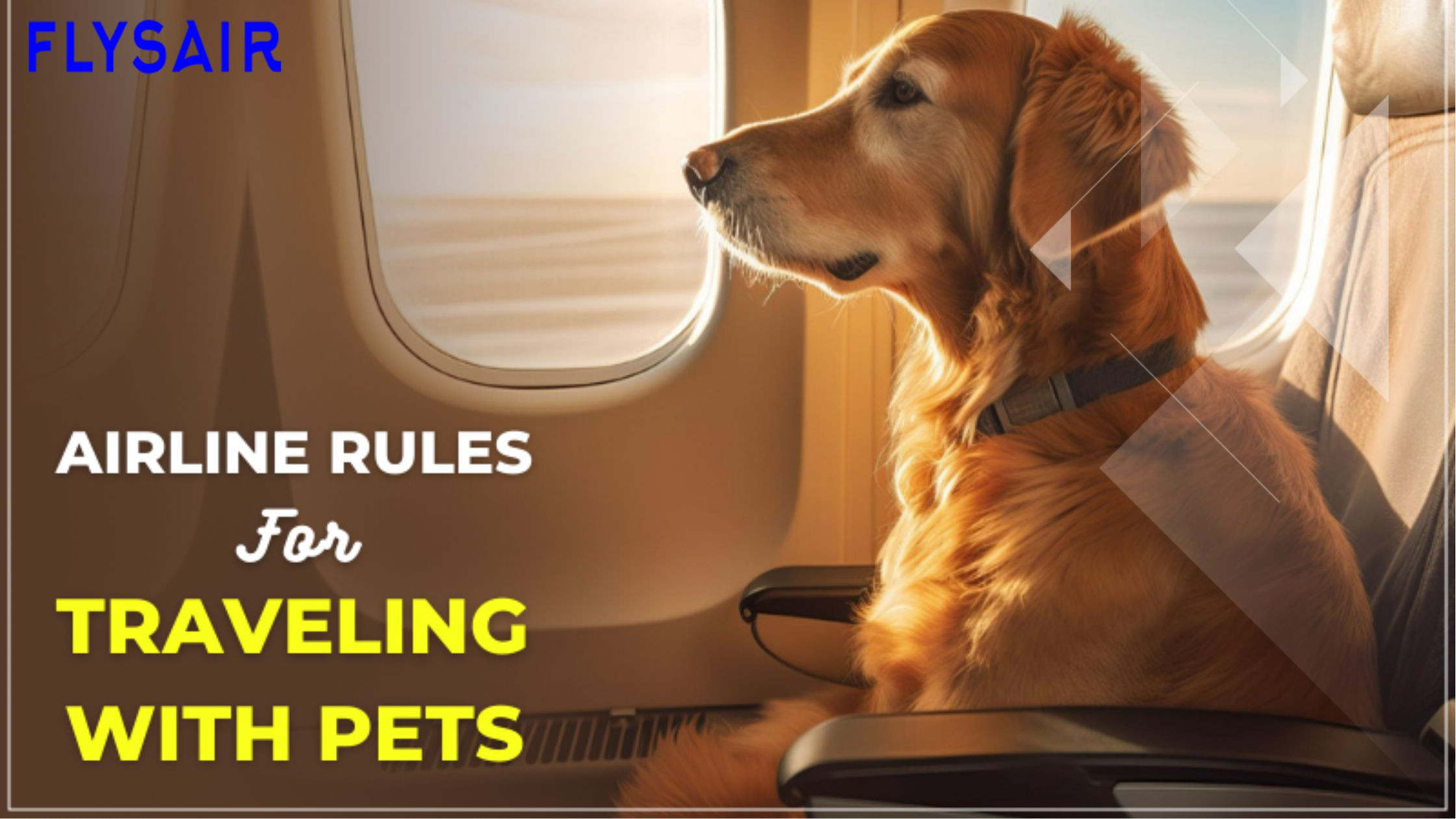Traveling with Pets: Airline Policies and Tips
Posted on June 13, 2024 by Admin

Traveling with Pets: Airline Policies and Tips
Traveling with pets can be a rewarding experience, but it requires careful planning to ensure the journey is safe and comfortable for both you and your furry companion. Different airlines have various policies regarding pet travel, and understanding these, along with some practical tips, can make your trip much smoother.
Airline Policies for Traveling with Pets
When planning to travel with your pet, it’s important to familiarize yourself with the specific policies of the airline you’ll be flying with. Here’s a general overview of what you might expect from major airlines:
- Cabin Travel:
- Requirements: Small pets such as cats, dogs, and sometimes birds can travel in the cabin if they fit in an airline-approved carrier under the seat in front of you.
- Carrier Specifications: The carrier must be leak-proof, ventilated, and comfortable for your pet to stand, turn around, and lie down in.
- Fees: There is usually a fee for bringing a pet into the cabin, which varies by airline.
- Checked Baggage:
- Eligibility: Larger pets that cannot fit in a cabin carrier must travel in the cargo hold. This is typically an option for domestic flights.
- Kennel Requirements: The kennel must be sturdy, properly ventilated, and large enough for your pet to stand, turn around, and lie down.
- Temperature Restrictions: Airlines may restrict pet travel in the cargo hold during extreme weather conditions.
- Cargo:
- Separate Booking: Some pets must be booked separately as cargo, especially for international flights or when the pet is too large to travel as checked baggage.
- Handling and Care: Cargo travel ensures that pets are handled by trained staff and kept in climate-controlled environments.

Tips for Traveling with Pets
- Plan Ahead:
- Check Airline Policies: Review the airline’s pet policies well in advance of your travel date.
- Book Early: Airlines often have a limit on the number of pets allowed per flight, so book as early as possible.
- Visit the Vet: Ensure your pet is healthy enough to travel and obtain a health certificate if required by the airline.
- Choose the Right Carrier:
- Size and Comfort: The carrier should be the right size for your pet and comfortable enough for the duration of the flight.
- Label the Carrier: Clearly label the carrier with your contact information and your pet’s name.
- Prepare Your Pet:
- Acclimate to the Carrier: Allow your pet to get used to the carrier before the trip by letting them spend time in it at home.
- Exercise Before Travel: Give your pet plenty of exercise before the trip to help them relax during the flight.
- Pack Essentials:
- Food and Water: Bring enough food and water for the trip and any delays. Some airlines require that you attach a food and water dish to the carrier.
- Medications: Pack any necessary medications and have a plan for administering them during travel.
- Comfort Items: Include a favorite toy or blanket to provide comfort to your pet.
- During the Flight:
- Stay Calm: Pets can sense your anxiety, so staying calm will help keep them relaxed.

Check on Your Pet: If your pet is traveling in the cabin, check on them periodically. If they are in the cargo hold, confirm with the airline staff that your pet has been safely loaded.
Faqs
-
1. What are the common requirements for pet carriers?
Pet carriers must be leak-proof, well-ventilated, and large enough for your pet to stand, turn around, and lie down comfortably. The specific dimensions may vary by airline, so check their guidelines before purchasing a carrier.
-
2. Can I sedate my pet before the flight?
Most veterinarians do not recommend sedating pets for air travel due to the potential health risks, particularly changes in blood pressure and respiratory issues. Instead, try natural calming products or consult with your vet for safe alternatives.
-
3. Are there any breed restrictions for traveling with pets?
Yes, some airlines have restrictions on brachycephalic (short-nosed) breeds due to their increased risk of respiratory problems. Always check with the airline regarding breed-specific policies before booking.
-
4. How much does it typically cost to travel with a pet?
Fees vary by airline and can range from $50 to $250 per pet, per flight segment, depending on whether the pet travels in the cabin, as checked baggage, or as cargo. Always verify current fees with the airline.
Recent Post
- Singapore Airlines: Tips for Booking the Best Seats in Economy Class
- The World’s Busiest Airports: Managing High Passenger Volumes
- How Airlines are Enhancing Passenger Experience with Technology
- The Impact of Low-Cost Airlines on the Aviation Industry
- Top 10 Airlines for Customer Service in 2024
- British Airways: Navigating Avios Points for Free Flights
- The Unique Features of Air France’s Premium Economy Class
- The Best Airlines for Group Travel: Discounts and Services
- Tips for Traveling with Disabilities: Airline Policies and Support Services
- How to Upgrade Your Seat Without Breaking the Bank